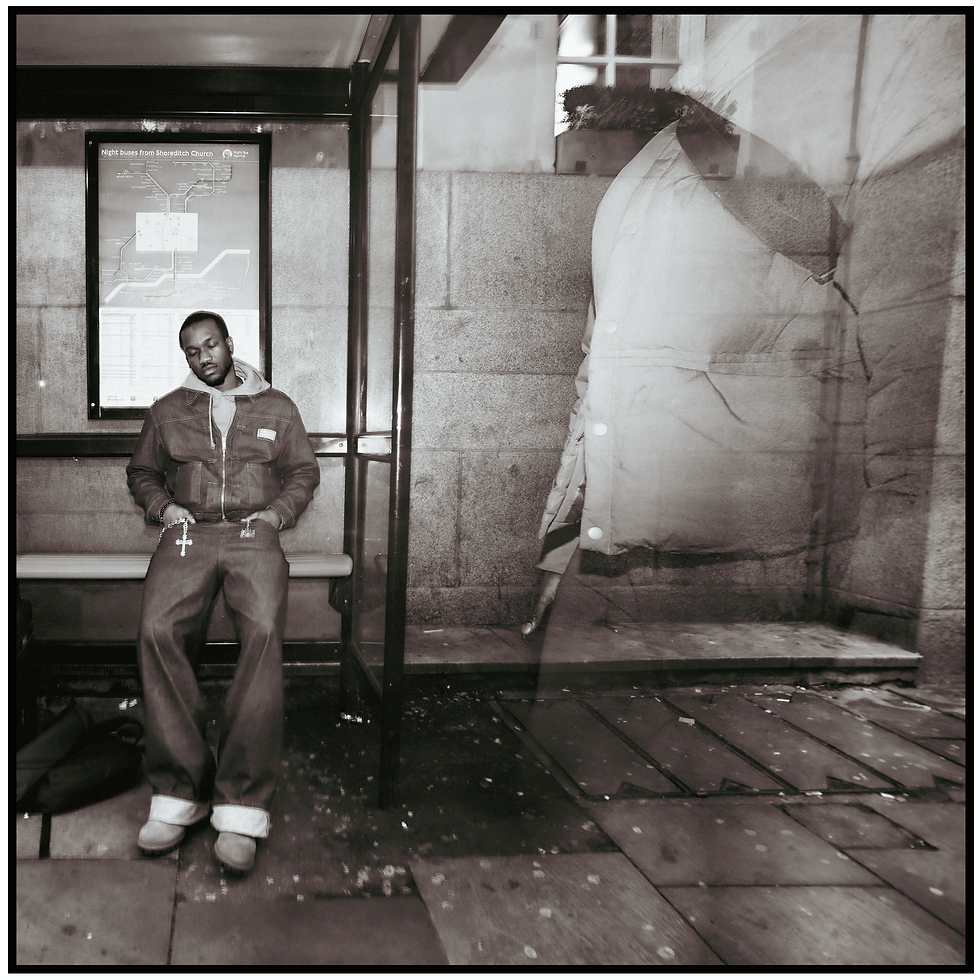Eli Raurich
- Anna Lilli Garai
- Apr 29
- 4 min read
Updated: May 5
Eli Raurich came to photography through instinct, then stayed for the challenge. She shoots on film, drawn to its pace, its texture, and the quiet tension it brings to each frame. Portraiture sits at the center of her work, not as performance, but as a space for something unguarded to surface. Her background in cinematography still shapes how she sees, but still photography is where the connection runs deeper. It’s where control gives way to presence — where a small shift in breath or posture can become the whole image.

Q: You shoot over 50 rolls of film a year. What keeps you coming back to analog?
A: For me it was love at first sight, in this case, love at first shoot. I understood how cameras worked thanks to being able to just open the chasis and literally see the diaphragm of the lens opening up or closing down as I played with the f stop, and the same with the shutter speed. I feel drawn to the simplicity and yet mechanical excellence of film cameras.
The aesthetics of film photography are unmatched — the grain, the texture, the colors... As a photographer, film has given me beautiful moments such as finding that one color film that just speaks to you, or developing a roll of film for the first time — even making your first handprint in a darkroom.
What will always keep me coming back to analog is the rush of excitement I feel throughout the entire process. Everything from choosing the film, to capturing life around me and finally processing it makes every single time a completely different and unique experience. The feeling of reward is so strong at the end of each cycle that I’m always hungry for more.

Q: Portraiture is central to your work. What usually tells you someone’s ready to be seen?
A: I don’t think there’s a single moment when someone is ‘ready’ to be seen — it’s more like a feeling that settles in between us. Sometimes it’s in the way they exhale, or how their body relaxes just a bit.
It’s not about a perfect pose or expression — it’s when something unguarded slips through.
I try to create a space where they don’t feel like they need to perform, and when that happens, even for a second, that’s when I feel like I’m seeing them — not just looking at them.
Q: You describe a portrait as a dynamic exchange. How do you know when the balance feels right?
A: Sometimes one person is leading too much — me or them — and the image feels forced, like we’re not listening to each other. But when there’s a balance, it’s quieter. There’s this mutual awareness, a kind of steady rhythm. I know it’s right when I’m not thinking so hard about the technical stuff anymore and I’m just responding to who they are in front of me. They’re present, I’m present, and something in that exchange clicks. You can feel it in the room before you even look at the frame.

Q: Your background is in engineering and cinematography. How do those disciplines shape the way you frame a shot?
A: To be completely honest, I have been trying to find a relation between my technical background and my art for so long. Nothing I learned by being an engineering student helped me artistically, I’d rather say the opposite actually. Because my studies were so mentally demanding... I shut off most of my creative world for all those years. I was still taking pictures of course, but they did not have any meaning, and maybe that is okay, but I did find that when I decided to be a full-time artist, I needed to reconnect with my inner child, the extremely creative little girl in me, and build myself as an artist again.
Q: You've worked across music videos, short films, and theater. What brings you back to still photography?
A: I’m always a photographer first. It’s something that comes so naturally to me that I would not know how to not be one. I see life in still images. I’ve always been emotionally drawn to the beauty and simplicity of daily life to the point of being moved to tears at the sight of an afternoon light. The best way that I know how to capture the magic of those sights is through still photography.
It’s different from being a Director of Photography. I need some kind of structure in order to create. When I am a cinematographer I need to go through a completely different creative process that challenges me professionally, which is also very rewarding though less intimate. The main difference, for me, is that still photography feels much less like a challenge and more like an inevitable extension of me.

Q: What kind of challenge do you look for when you pick up the camera now?
A: Lately, one of my biggest challenges is stepping outside of the kind of space I know how to control. I’ve always loved street photography — some of my favorite photographers come from that world — and I admire the vision so deeply because it feels so raw and fearless. There’s something about the way street photographers interact with the world, with strangers, with chaos — that takes real courage.
For me, being out in public with a camera still feels exposing, like I’m the one being seen. It’s uncomfortable, but that’s part of why I want to lean into it. I want to be braver with my work, to let go of that need to be invisible or in control, and just be present in the messiness of the outside world. It’s definitely something I’m still figuring out.


